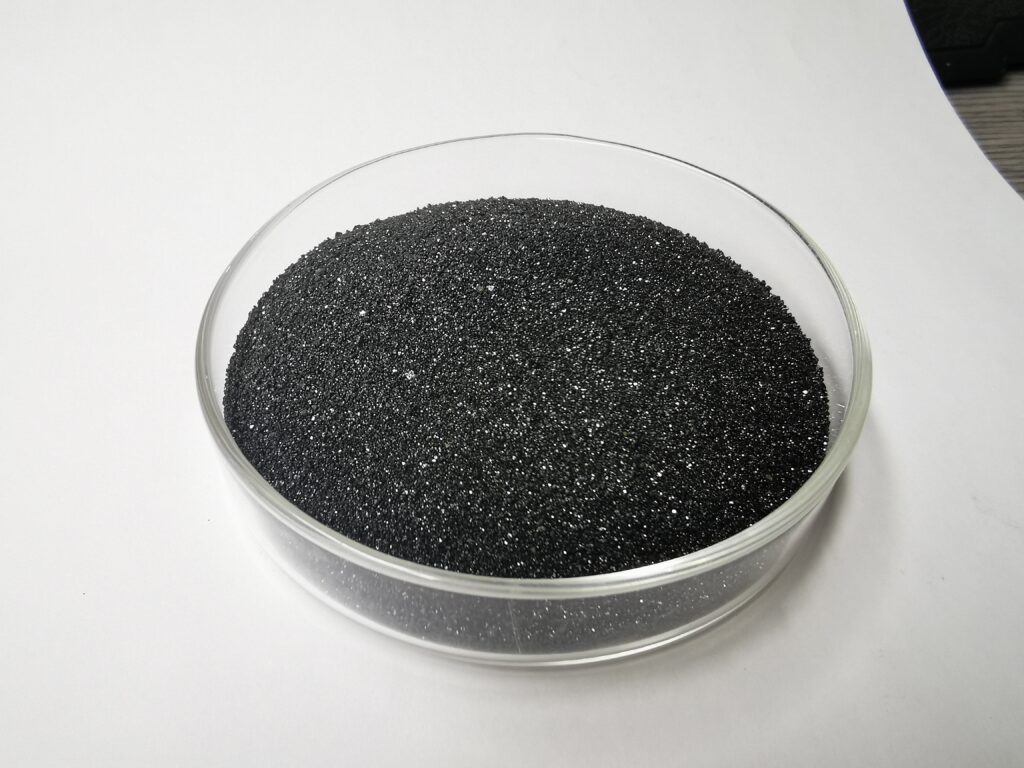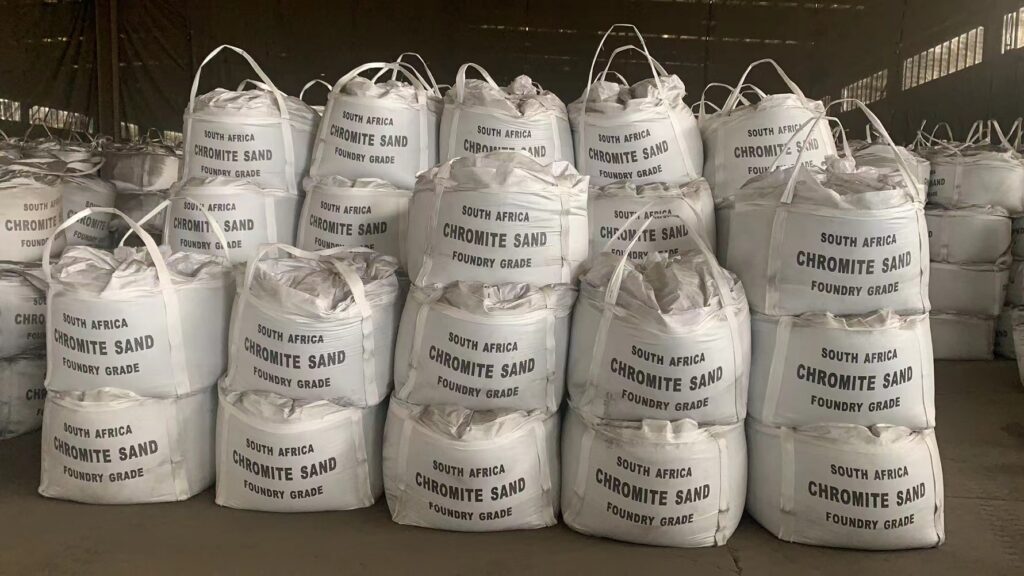Chromite Sand in Automotive Casting Molds: Properties, Applications, and Benefits
Chromite sand (FeCr₂O₄) is a refractory mineral sand widely used in foundries, particularly for automotive casting molds and cores. Its high melting point, thermal stability, and resistance to metal penetration make it ideal for demanding casting processes, such as engine blocks, cylinder heads, brake components, and transmission parts.
| PHYSICAL PROPERTIES(TYPICAL) | AVERAGE CHEMICAL COMPOSITION(TYPICAL) | ||
| PH | 7-9 | Cr2O3 | ≥46.0% |
| Color | Black | SiO2 | ≤1.0% |
| Acid Amount | ≤2m | Fe2O3 | ≤26.5% |
| Soil% | ≤0.1 | CaO | ≤0.30% |
| Bulk Density | 2.5-3.0g/cm3 | MgO | ≤10.0% |
| Specific Gravity | 4.0-4.8g/cm3 | Al2O3 | ≤15.5% |
| Moisture | ≤0.1% | P | ≤0.003% |
| Sintered temperature | ≥1800℃ | S | ≤0.003% |
| Free Acid | 0 | Cr/Fe | 1.55:1 |
| Filling density | 2.6g/cm3 | ||
| Melting temperature | ≥2180℃ | ||
1. Why Use Chromite Sand in Automotive Castings?
Key Advantages
✔ High Melting Point (~2,150°C) – Withstands molten steel, iron, and aluminum without breaking down.
✔ Excellent Thermal Stability – Reduces burn-on defects and sand expansion-related defects (e.g., veining, rat tails).
✔ Low Thermal Expansion – Minimizes mold cracking during metal solidification.
✔ High Thermal Conductivity – Promotes faster cooling, improving casting microstructure.
✔ Chemical Inertness – Resists reactions with molten metal (especially beneficial for steel and high-manganese alloys).
✔ Good Flowability & Compactability – Ensures uniform mold density for precise castings.
2. Applications in Automotive Castings
Chromite sand is commonly used in:
Engine Blocks & Cylinder Heads (steel/aluminum) – Prevents metal penetration and sand burn-in.
Brake Discs & Drums – Withstands high pouring temperatures.
Transmission Housings – Reduces sand-related defects in complex geometries.
Exhaust Manifolds – Resists thermal fatigue from repeated heating/cooling cycles.
3. Comparison with Other Foundry Sands
| Property | Chromite Sand | Silica Sand | Zircon Sand | Olivine Sand |
|---|---|---|---|---|
| Melting Point (°C) | ~2,150 | ~1,710 | ~2,550 | ~1,800 |
| Thermal Expansion | Very Low | High | Very Low | Moderate |
| Thermal Conductivity | High | Low | High | Moderate |
| Cost | Moderate | Low | High | Moderate |
| Best For | Steel, iron, high-temp alloys | General-purpose | Precision castings | Non-ferrous metals |
4. How Chromite Sand is Used in Mold Making
(A) As a Facing Sand (Most Common)
Applied as a 5-20 mm layer where molten metal contacts the mold.
Prevents burn-on, penetration, and sand erosion.
(B) In Core Production
Mixed with resin binders (e.g., phenolic urethane, furan) for high-strength cores.
Used in high-heat areas (e.g., cylinder head water passages).


